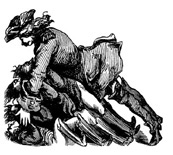
Revolt of the Ultra-Elites
ONE-PERCENTERS, COURTIERS, MAGICIANS & MINIONS
Some 30 years ago I watched as the parents of a Columbia University freshman reacted with incredulity to their daughter’s shrill peroration about the necessity to remove crosses from all public spaces so as “not to offend anyone.” Her folks had shown up in New York to fetch her home for Thanksgiving. They yearned for familial continuity. Instead, a chain of love snapped, perhaps irreparably, because within three short months, their daughter had become indoctrinated in the dogma of what we now call wokeness.
The young lady became a janissary, one of the active courtier participants in the revolution of the One Percent. The moniker derives from the Occupy Wall Street movement, which ostensibly targeted the ultra-wealthy. The target, however, responded with a revolution of its own, a revolution from above, the often violent convulsions of which are taking place primarily in city streets, on university campuses, and in corporate boardrooms.
The revolution of the One Percent has two aspects: existential and pragmatic. The former reflects a strategic endeavor to replace the moral order of the West with antithetical arrangements. The latter consists in a tactical and operational effort to perpetuate the One Percent in power.
To accomplish this, the civilizational context must be altered. Arguably, the most important impediment to the One Percenters’ domination is tradition, including American nationalism and Christianity. By destroying traditional America and remolding the ruins to their fashion, the One Percenters anticipate no serious challenge to their supremacy.
You May Also Enjoy
Infant mortality, life expectancy, and disability rates confirm that the poor and uninsured permanently suffer the consequences of our broken healthcare system.
I fantasize that some contemporary Nathan the Prophet might chat with the President, not about sins like adultery and murder but about social sins. I’m afraid a Catholic bishop would not be right for the part.
Let us not love America inordinately or unrealistically. It is enough to be Americans without also being vainglorious Americanists.

